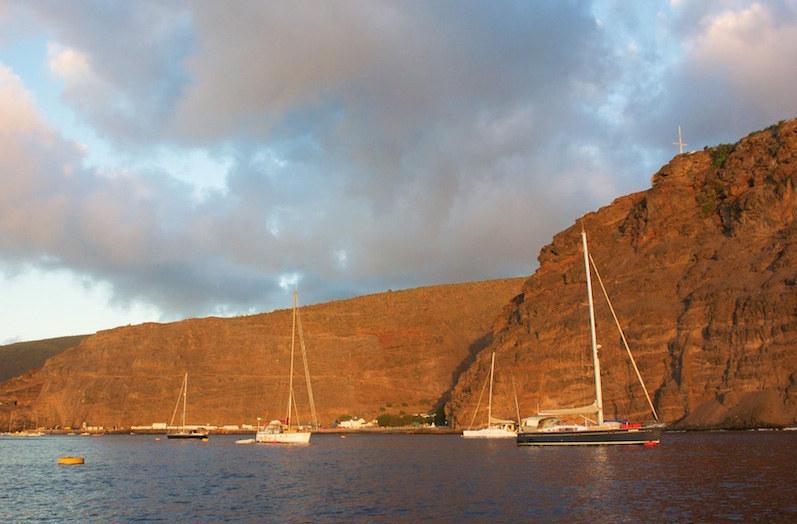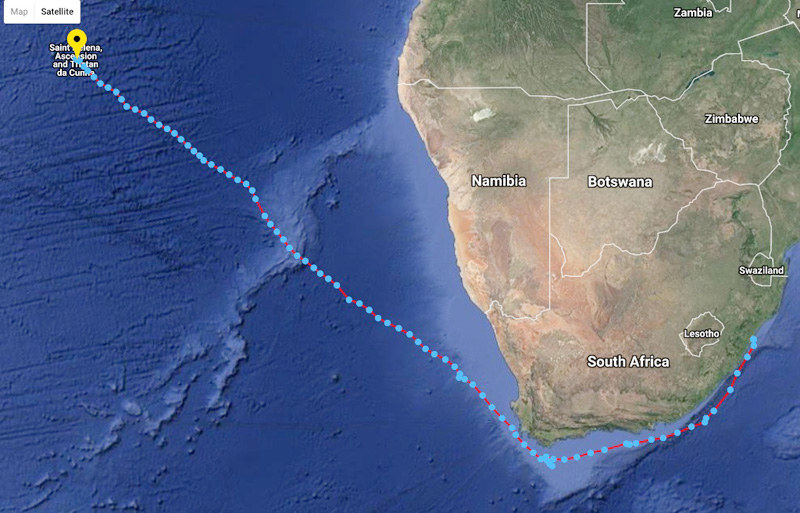
Around the World on a 24-Footer

The instant responsiveness of small, tiller-steered sailboats makes them excellent platforms for introducing neophytes to the joys of sailing. And when under the command of experienced sailors, the best of them — such as Santa Cruz-built Moore 24s — can be successfully raced both around the buoys and offshore. But only a naive beginner would attempt to cross oceans in a tiny Moore, right?
Wrong. As reported earlier, five-time circumnavigator Webb Chiles, now 75, is roughly two thirds of the way through his sixth lap around the planet (westabout with stops) aboard his Moore 24 Gannet. After completing a 23-day passage from Durban, South Africa, to remote St. Helena Island, he checked in a few days ago with this report:
"Gannet is on one of 22 or 23 moorings put down for visiting yachts at St. Helena Island, about 2/3s of which are full. When I was here 29 years ago you had to anchor in very deep water and use your dinghy to get ashore, which, with a lot of surge, was an adventure… This isn’t a harbor, just an indentation on the lee side of the island. The moorings are off a several hundred foot high cliff. Lots of terns flying up there where I assume they nest…
"The weather this year never provided even 72 hours of fair wind along the South African coast. I got tired of waiting and decided to make this an ocean passage rather than a coastal one, and went to sea intending to stay there rather than harbor hop. I expect that Gannet was the smallest boat to clear into Durban this season. I am certain she was the only one to clear for St. Helena. The Immigration officer asked me where it is. Sorry, Napoleon.
"Along the South African coast Gannet had her best day’s run ever, an Agulhas Current-assisted 180 miles. I was routinely seeing SOGs of 12 and 13 knots when we were sailing 8 and 9 knots. Six days later was her slowest day of only 13 miles, when we lay ahull for 12 hours in 20- to 30-knot headwinds, and then were becalmed for 12 hours, forty miles off Cape Agulhas, which we passed three times, twice sailing west, once drifting back east…
"Once clear of Cape Agulhas and the Cape of Good Hope, we had mostly good sailing except for a couple of days of gale force winds when we again lay ahull. When those winds first reached us during the night I saw an SOG of 14.1 knots before I could reduce sail, the highest I have ever seen on Gannet, though she may have gone higher when I wasn’t looking. Two waves caught us and knocked us down, at least one of which put the masthead in the water because the Windex up there is now broken. That Windex was new in Durban, a replacement for one broken last year in a masthead-in-the-water knockdown in the Indian Ocean.
"The last week was easy trade-wind sailing. I could have gone faster, but just let Gannet ease along under jib alone. I’ve done a lot of hard. Easy was nice."

The sometimes-San Diego-based author/sailor set sail for points north on Wednesday. To follow his progress via his transponder track, see this site. And to learn about his previous adventures — most of which are chronicled in a series of books — see his personal website.
We have more on this intrepid voyager’s travels in upcoming issues of Latitude 38 magazine.
